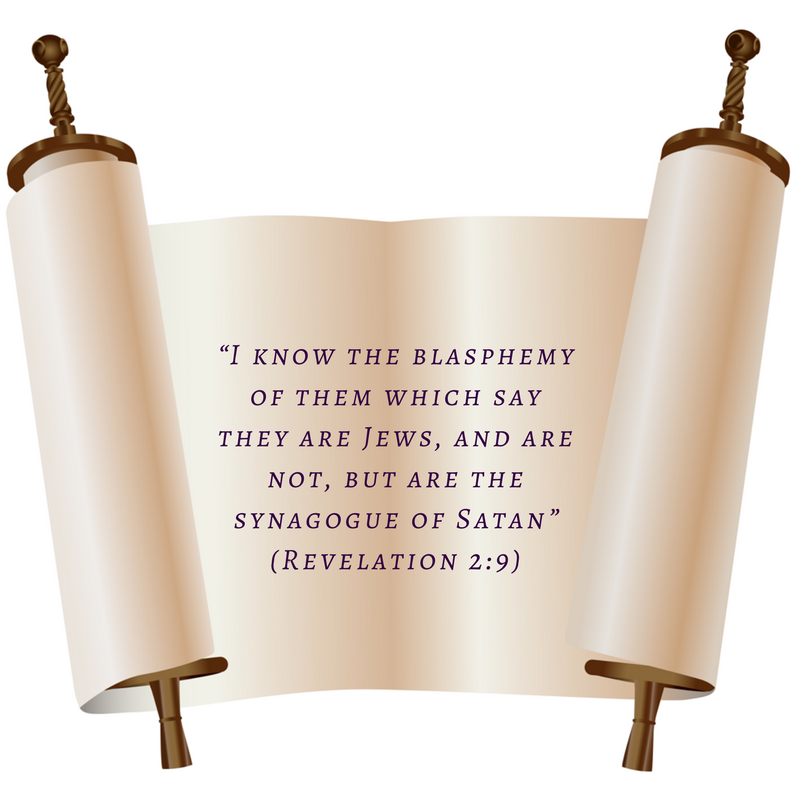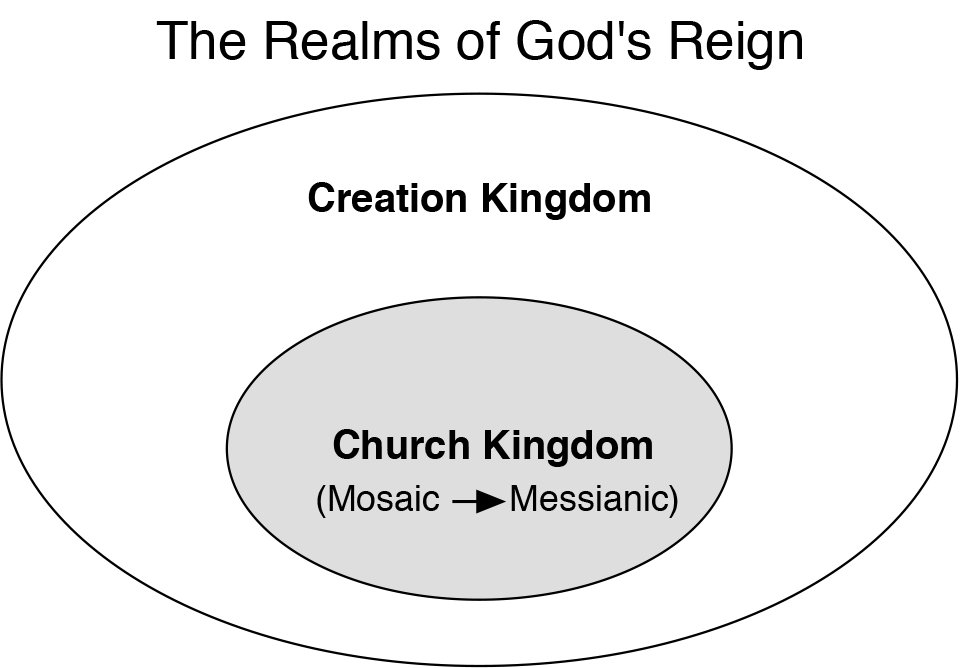
Churches are not often concerned about false Jews today. If someone identifies themselves as a Jew, people do not ask for verification. And they shouldn’t.
In John’s day, a unique historical situation made “false Jews” a threat to the churches. This category did not arise from a person’s ethnicity, but from their violent response to the gospel of the kingdom of God.
In Revelation’s first vision, Jesus spoke words of comfort to the church in Smyrna: “I know thy works, and tribulation, and poverty, (but thou art rich) and I know the blasphemy of them which say they are Jews, and are not, but are the synagogue of Satan” (Rev 2:9).
The idea of “false Jews” should never be taken out of context; certainly not to justify any form of anti-Semitism. John and the churches to whom he wrote understood their situation. As we have seen, the Apostle wrote the Revelation just before the “great tribulation” of which Jesus spoke (Matt. 24:21). This period of suffering would come before Jesus’ generation ended (Matt. 24:34; cp. Matt. 16:27–28). Let us discuss “false Jews” from this perspective.
The generation following Christ’s ministry was a time of transition and conflict. Our last post helps us understand what God was doing during this period and how the Revelation describes the climactic end of his actions.
Jesus had used parables to describe what would happen. He concluded one such parable by telling the Jewish chief priests and elders, “The kingdom of God shall be taken from you, and given to a nation bringing forth the fruits thereof” (Matt. 21:43).
They understood his meaning—“they perceived that he spake of them” (Matt. 21:45)—and it displeased them. Their reaction was not one of passive resignation.
Israel after the flesh was the kingdom of God during the Mosaic Age. Jesus redefined what it meant to be a Jew. This redefined Israel would serve in the kingdom of God during the Messianic Age. The Jews of the old kingdom must believe on Christ to continue as God’s true Jews during the new kingdom. Otherwise, they would become false Jews—those claiming privilege in God’s kingdom without meeting the (changed) qualifications for citizenship.1
The New Testament describes many examples of how the false (Mosaic-age-only) Jews persecuted the true people of God. They began by killing the Lord Jesus soon after he spoke the parable we mentioned above (e.g., Matt. 27:20).
The now-false Jews continued to pour out their wrath and resentment on God’s redefined holy nation (1 Pet. 2:9). Fifty days after Jesus rose from the dead, God anointed his new nation with the Holy Spirit (Acts 2). The Spirit empowered the new people of God to preach and perform miracles, much to the consternation of the old-age Jewish leaders: “the priests, and the captain of the temple, and the Sadducees, came upon them, Being grieved that they taught the people, and preached through Jesus the resurrection from the dead. And they laid hands on them, and put them in hold” (Acts 4:1–3).
The fact that the new Israel continued to witness against the Temple served as a particular irritant to the old Israel hierarchy. Jesus had foretold its soon-coming destruction (Matt. 24:1–3, 34). When witnesses accused Stephen of preaching “Jesus of Nazareth shall destroy this place, and shall change the customs which Moses delivered us” (Acts 5:14), the Jewish leaders stoned him (Acts 7:54–60).
The high priest of the old order commissioned Saul of Tarsus to arrest those who followed the new way of worshipping God through Christ (Acts 9:1f). When Herod vexed certain of the church (the redefined Israel) and killed James, “it pleased the Jews” (Acts 12:1–4). After God converted Saul into the Apostle Paul, the church at Antioch (of Syria) sent him to preach the gospel of the kingdom in other places (Acts 13:1–3). Jews, as defined by the Mosaic Age, opposed him. Barjesus withstood him in Paphos (Acts 13:6–8). Jealous Jews contradicted, blasphemed, and persecuted him in Antioch in Pisidia (Acts 13:14, 42–51).
Jewish leaders who rejected Jesus as their Messiah continued to align themselves with Rome in opposition to the gospel of the kingdom. They did this in Jerusalem at Jesus’ trial (John 19:15) and, later, when Paul preached in other cities. In Thessalonica, for example, they said he did “contrary to the decrees of Caesar, saying that there is another king, one Jesus” (Acts 17:7).
This persecution of the true (Messianic-age) Israel by the false (Mosaic-age) Israel would soon come to an end. Paul wrote to the church at Thessalonica a few months after the above incident. In it he said,
For you, brothers, became imitators of God’s churches in Christ Jesus that are in Judea, since you have also suffered the same things from people of your own country, just as they did from the Jews who killed both the Lord Jesus and the prophets and persecuted us; they displease God and are hostile to everyone, hindering us from speaking to the Gentiles so that they may be saved. As a result, they are always completing the number of their sins, and wrath has overtaken them at last. (1 Thess. 2:14–16, HCSB; emphasis added)
This generation-long persecution of the Israel in Christ by the Israel in Moses was about to end. The appointed number of sins was almost complete (cp. Matt. 23:31–39). As a result, God’s wrath against the persecutors was at hand.
This brings us back to where we began this post. The false Jews were still persecuting the churches as John stood on the island of Patmos (Rev. 1:9; 2:9). God’s vengeance against them thus becomes a major theme in the Revelation (e.g., Rev 6:15-16; 7:4; 11:8; etc.). The bookend time statements (see The Bookends of Revelation) show that this vengeance would soon come. The Israel of God would suffer at the hands of the false Jews a little longer. They would endure tribulation from this source “ten days” (Rev. 2:10). The destruction of the Mosaic-age Temple and capital city would then diminish the ability of these false Jews to carry on persecution.
We will return to this theme as we continue to apply inmillennialism to the Revelation. For now, let us update our diagram from the last post to show the “church kingdom” transfer that was underway in the apostles’ generation. This was the transfer that generated the persecution of the churches by the “false Jews” of that day.

Footnotes
- For an explanation and defense of these statements, please see our post Israel: God’s Church Kingdom.
